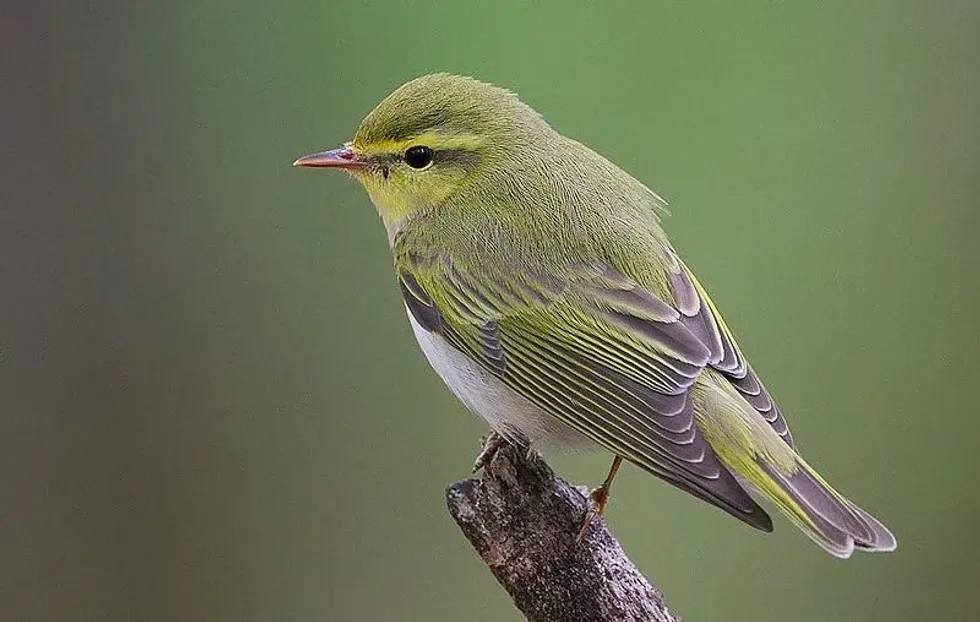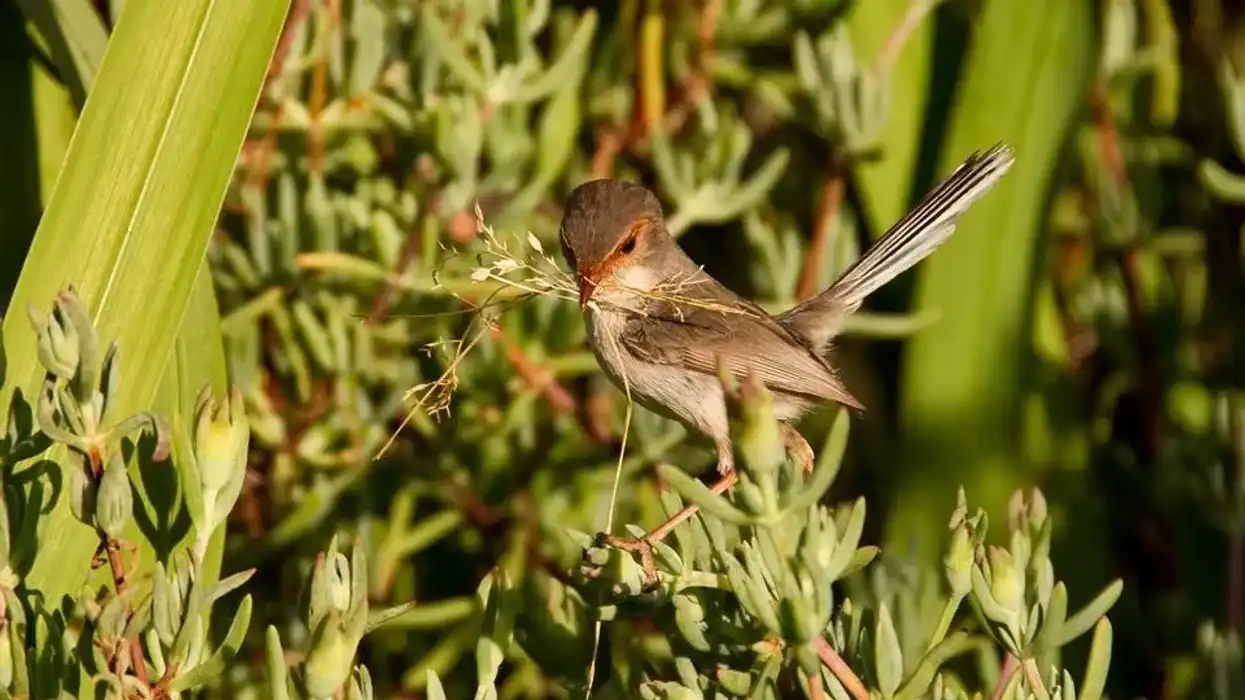Wood warbler (Phylloscopus sibilatrix) birds are a part of the Old World species group. They are a bird species that can be spotted throughout oak woods and forests situated in Europe, the UK, Asia, and Russia.
They should not be confused with the bird, the willow warbler, despite their distinctly similar features. Their migration pattern has revealed that they love to migrate to mossy and densely forested areas in Africa. They spend the majority of their time in Africa and only go to the north for breeding purposes.
Being a part of a group means that many of these birds become easy targets for predators like owls, hawks, and small mammals. These birds belong to the Phylloscopus genus.
If you end up ever visiting a deciduous forest in Europe, there's a high chance you might see these birds or hear their song. Many people feel that seeing or even hearing a warbler can signify zeal and endurance toward living your best life!
Read on to know more fun facts about the wood warbler. If you would like to read other articles such as this one, you can check out our Icterine warbler and Kirtland's warbler facts for more.
Wood Warbler Interesting Facts
What type of animal is a wood warbler?
The wood warbler is a songbird found commonly throughout Europe, the UK, and near the Ural Mountains. It is a type of leaf warbler and a known member of the Sylviidae family.
These birds migrate south towards Africa during the winter to hibernate. Although the scientific name of the species is Phylloscopus sibilatrix, their common name is the wood warbler.
What class of animal does a wood warbler belong to?
The wood warbler is a type of bird that falls under the class, Aves. They belong to the Sylviidae family and should not be confused with the willow warbler, another bird species with whom they share various commonalities.
How many wood warblers are there in the world?
Various wood warbler species live in Europe, the UK, and Asia. It is possible to spot around one-third of them but not the entire population or different genera. The exact population of wood warblers present in the world is around 17,000,000-27,999,999 according to the IUCN.
Where does a wood warbler live?
These birds can be found in various regions of the UK such as Ireland, in Europe, Asia, and near the Ural Mountains in Russia. They prefer to live in wooded areas and forests, especially those that have a variety of coniferous and deciduous trees. During the winter, many migrate to southern regions in Africa, Southern Europe, and Asia.
What is a wood warbler's habitat?
A wood warbler's habitat mainly consists of woods, dense forests, and mossy regions. They love to rest on deciduous and coniferous trees and can be found in regions that are home to many oak woods. These are particularly found in many places in the north of the UK.
Who do wood warblers live with?
This species commonly stays together in groups, called flocks. They migrate together, cohabit and nest together, and look for food together.
How long does a wood warbler live?
The lifespan of an average wood warbler can extend anywhere from eight years to 12 years.
How do they reproduce?
One of the biggest reasons for wood warbler migration is breeding. These birds are mainly in the north for breeding purposes, so they tend to have a large number of eggs, usually between one and seven at a time, before they move to southern regions.
These eggs are present in the nest and take about 10-13 days to hatch, and the nestling period is nine to 12 days.
What is their conservation status?
The conservation status of the wood warbler bird is listed in the Least Concern category according to the International Union for Conservation of Nature.
Wood Warbler Fun Facts
What do wood warblers look like?
Wood warblers are birds that have brightly colored parts and can be spotted from far away. Their breast area is generally lemon-yellow, a color similar to their top, and below the breast, the underparts are all white.
Their tail is short but broad, and like the head, the tail also has stripes. The throat, upper chest, and upper parts are usually bright yellow. The throat is also of significant length and is an important part of the wood warbler's body as it helps in making its signature song.
How cute are they?
Wood warblers are extremely colorful and cute. They also have a distinct sound that has previously been described as the sound of a coin stopping on the surface of a glass table.
How do they communicate?
During migration, they communicate through a flight call, often recognized as a wood warbler calls. In general, they communicate mainly through acoustic signals, sounds, and songs. This iconic wood warbler call is the reason for the bird's name, 'warbler'.
How big is a wood warbler?
The length of a wood warbler is somewhere between 4.3-5.1 in (11-13 cm). Even in comparison to the largest warbler, the russet-crowned warbler which is 5.9 in (15 cm) tall, these birds are short. These height details can help anyone trying to complete the identification of a wood warbler bird.
How fast can a wood warbler fly?
There is a large amount of variation in the data that has been provided which describes the speed of different songbirds and warblers. Therefore, we cannot know their exact flight speed.
How much does a wood warbler weigh?
An average wood warbler can weigh anywhere between 0.2-0.5 oz (6.5-15 g). This is a small species, so the birds don't weigh much. The wood warbler range doesn't differ much when it comes to weight.
What are the male and female names of the species?
There are no specific terms used to differentiate between males and females in this species. The Sylviidae family does not have gender-specific terms and members of the Parulidae family also do not.
What would you call a baby wood warbler?
A baby wood warbler is called a baby bird, or even a nestling if it hasn't learned how to take flight yet. There is no common name that is specifically used for baby wood warblers.
What do they eat?
These birds are mostly carnivorous. Since a majority of their diet consists of insects, many members of this species are also referred to as insectivores. They love to feed on spiders and flies. Some also habitually munch on seeds and berries.
Are they dangerous?
These birds showcase predator instincts towards certain kinds of insects and different types of bugs and pests. So, for these creatures, they are extremely dangerous. However, they are rather small in size and not categorized as birds of prey, therefore, for humans, they are relatively harmless.
Would they make a good pet?
It is never recommended that wild birds such as the wood warbler are kept as pets. These animals are not meant to be domesticated, therefore, they would have a hard time adjusting to living in a cage or an enclosed setting.
In some places such as the United States, it is illegal to keep a wild bird as a pet.
Did you know...
North American warblers are considered to be a part of the New World group of species also called wood warblers.
How does a wood warbler survive in the wild?
One of the main reasons behind the survival of the wood warbler is their flexible eating strategy. They can catch food mid-air, eat from leaves and tree bark, eat pollen from flowers and drink nectar, and also pick up bugs along the shoreline.
The second secret to their success lies in their being able to store more fat by digesting the wax of berries.
How does the wood warbler affect the food chain?
Since this species mainly consume insects, spiders, and flies, they help maintain the natural order of the food chain by controlling insect and spider populations.
Here at Kidadl, we have carefully created lots of interesting family-friendly animal facts for everyone to discover! Learn more about some other birds from our palm warbler facts and magnolia warbler facts pages.
You can even occupy yourself at home by coloring in one of our free printable wood warbler coloring pages.










